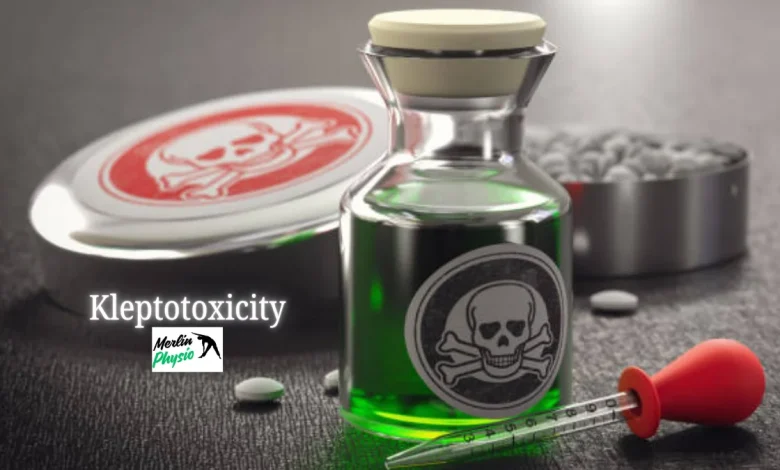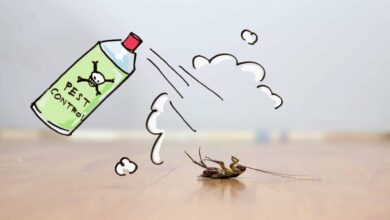Kleptotoxicity: The Hidden Poison of Taking and Exploiting Others

Introduction to Kleptotoxicity
Kleptotoxicity is a term that may not roll off the tongue easily, but its implications are profound. Imagine being in a relationship where you feel drained, manipulated, or even robbed of your self-worth. This phenomenon encompasses much more than mere theft; it delves into the psychological manipulation involved when individuals exploit others for their gain. It’s an insidious cycle that can leave lasting scars on both victims and perpetrators alike.
As we explore kleptotoxicity, we’ll uncover how it manifests in everyday life and relationships. We’ll look at the signs to watch for and discuss its impact on those affected. More importantly, we’ll delve into ways to break this toxic cycle and foster healing from these harmful dynamics. Understanding kleptotoxicity is crucial—not only for identifying unhealthy relationships but also for reclaiming your power and well-being.
The Psychology Behind Taking and Exploiting Others
At the core of kleptotoxicity lies a complex psychological landscape. Individuals who take and exploit others often grapple with deep-seated insecurities. They may feel inadequate or powerless, leading them to assert control over those around them.
Manipulation becomes their tool for validation. The thrill of taking from others might provide a fleeting sense of power, masking their internal struggles.
Empathy can be notably absent in these individuals. Their ability to understand and share the feelings of others diminishes as they prioritize selfish gains. This detachment allows harmful behaviors to thrive without moral consideration.
Moreover, societal influences play a role. Cultural norms that glorify success at any cost can breed toxic competition, encouraging individuals to prioritize self-interest above all else. Understanding these underlying dynamics sheds light on why some people resort to exploiting those closest to them.
Signs and Symptoms of Kleptotoxicity
Kleptotoxicity can manifest in various subtle and overt ways. Individuals affected might display a marked sense of entitlement, believing they deserve more than what others have to offer.
Another common sign is chronic dissatisfaction. No matter how much they take or exploit, it never seems enough. This constant craving often leads to feelings of emptiness.
Victims may also notice manipulative behaviors, where the kleptotoxic individual skillfully twists situations to their advantage. Gaslighting tactics are frequent; making victims question their reality and perceptions.
Additionally, there’s an emotional detachment that comes into play. Those who engage in kleptotoxic behavior often struggle with genuine connections, preferring superficial interactions instead.
Resentment can build up over time for those on the receiving end. As these patterns persist, relationships begin to fracture under the weight of exploitation and betrayal.
The Negative Impact on Victims
Victims of kleptotoxicity often find themselves trapped in a cycle of emotional turmoil. The constant exploitation can erode their self-esteem, leaving them feeling worthless and vulnerable. Trust becomes a fragile concept, making it hard to form new relationships.
Many experience anxiety and depression as they grapple with the sense of betrayal. They may question their worthiness or blame themselves for allowing such behavior. This internal conflict is exhausting.
Financially, victims might suffer too. Resources spent on repairing damage from toxic relationships can lead to instability.
Social circles also shrink as isolation creeps in; friends may not understand the victim’s situation or may even distance themselves due to the toxic dynamics at play.
These layers of impact create a complex web that extends far beyond immediate relations, affecting every aspect of life for those caught in this destructive pattern.
How to Break the Cycle of Kleptotoxic Behavior?
Breaking the cycle of kleptotoxic behavior requires introspection and commitment. First, acknowledge the patterns at play in your relationships. Understanding how you contribute to this dynamic is crucial.
Next, set clear boundaries. Communicate what behaviors are unacceptable. This creates a foundation for healthier interactions.
Seek support from trusted friends or professionals who can guide you through this process. Sharing your experiences often brings clarity and reinforces accountability.
Practice empathy by putting yourself in others’ shoes. Recognizing their feelings can help curb harmful tendencies.
Focus on self-improvement through mindfulness techniques or therapy. These methods empower personal growth and reduce the temptation to exploit others for gain. Embrace change as a journey rather than an endpoint; each step counts toward breaking free from destructive cycles.
Healing from Kleptotoxic Relationships
Healing from kleptotoxic relationships requires patience and self-compassion. Start by acknowledging the pain inflicted upon you. Understanding that these toxic dynamics were not your fault can be liberating.
Establish boundaries to protect yourself as you navigate this journey. It’s vital to create a safe space where healing can flourish. Surround yourself with supportive friends or family members who respect your emotional needs.
Engage in activities that promote self-discovery and growth. Journaling, therapy, or mindfulness practices can help unravel the emotions tied to your experiences.
Take time for reflection; learn how past interactions shaped your views on trust and vulnerability. Rebuilding self-esteem is crucial—celebrate small victories along the way.
Remember, it’s okay to seek professional help when needed. Healing is not linear; it ebbs and flows like tides, but every step forward counts toward reclaiming your life from kleptotoxicity’s grasp.
Conclusion
Kleptotoxicity is a complex and damaging issue that often goes unnoticed until it leaves deep scars. By understanding its psychological roots, we can begin to recognize the signs within ourselves and others. Recognizing these traits is vital for breaking the cycle of exploitation.
Victims suffer immensely from kleptotoxic behavior, facing emotional turmoil that can linger long after the toxic relationship ends. Acknowledging this pain is essential for healing.
Breaking free from such dynamics requires courage and self-reflection. It involves setting firm boundaries and surrounding oneself with supportive individuals who uplift rather than exploit.
Healing takes time; it’s not a linear process but an evolving journey toward reclaiming one’s power. Embracing this journey is critical in eliminating toxicity from our lives while fostering healthy relationships built on respect and trust.
Embracing awareness about kleptotoxicity empowers us all to foster healthier connections moving forward. Through education, empathy, and self-care, we can build a community less affected by these harmful patterns.




